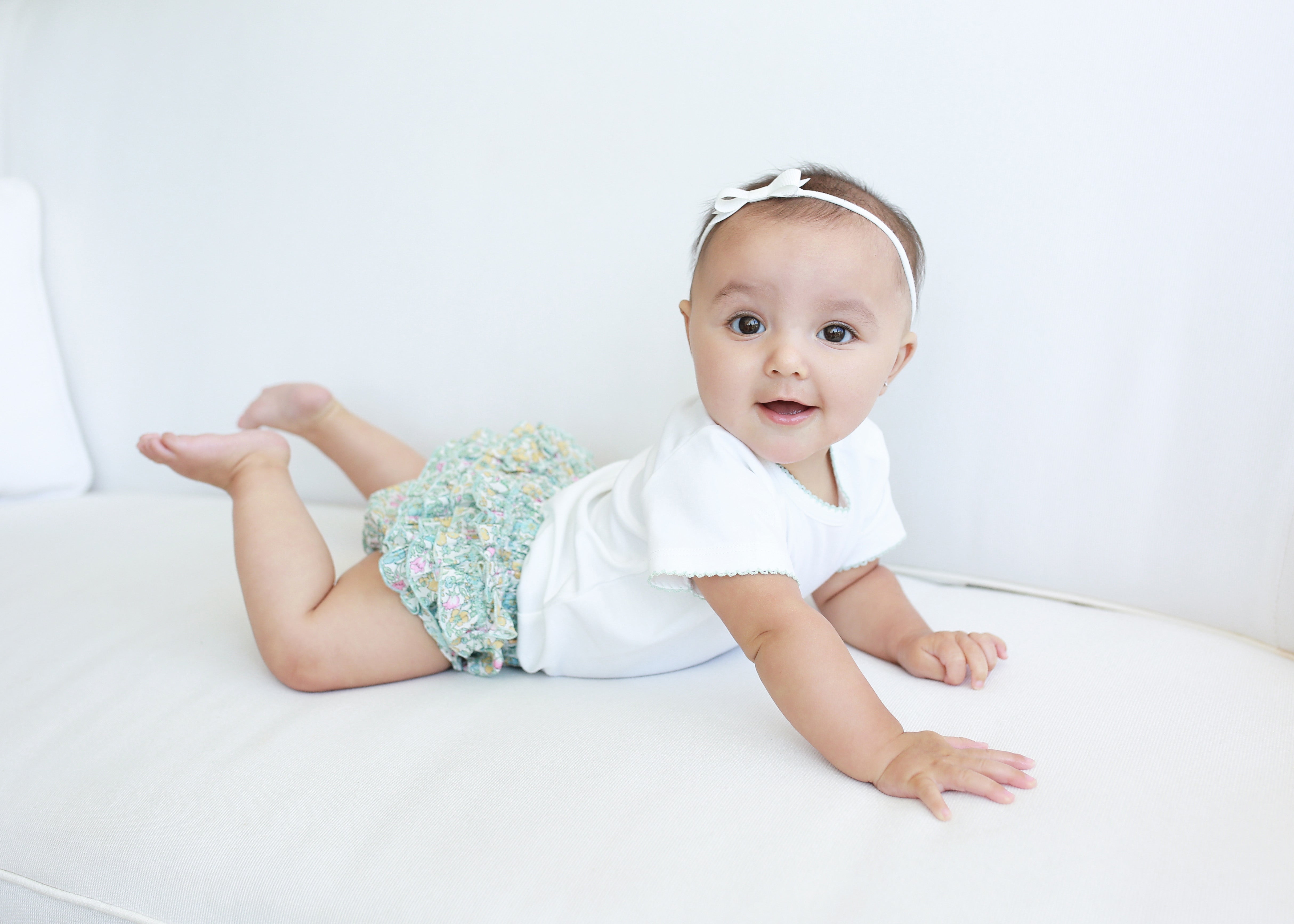Red cardigan or blue? The answer may be more important than you think.
Sofi Cashmere Everyday Cardigan. Discover more adorable Cashmirino knitwear classics.
Perhaps you know for yourself – when the sun is shining and everything around is brightly lit, we tend to wear colours that are vivid and uplifting. Conversely, when it’s dull and grey, we feel more subdued and are inclined to wear colours in keeping. This is because we are light-sensitive creatures. Every colour has an energy wavelength and they all affect our brain and body in different ways.
|
In fact, psychological studies have proven this point, and marketers and advertisers have used it to their advantage over many decades. But how does the link between colour and physiology affect our little ones in practical terms? How might choosing that red or blue cardy make a difference to their day?
|
 |
How children’s colour sense evolves
Children’s relationship with colour evolves rapidly in the first year. Babies up to three months are thought to see only in black-and-white, which means contrast and pattern are more important than colour. From three to six months, colour starts to be perceived and bright, primary colours help to stimulate the brain.
By six to 12 months, colour vision is fully developed, and exposure to different shades and tints helps babies start making colour associations. As language develops from here on in, active colour recognition and colour differentiation emerge and, by three to four years old, children begin to identify, recognise and name basic colours.
This relationship with colour as a general principle underscores its role as a valuable learning tool. This is definitely worth bearing in mind as you choose (or they choose!) their evolving wardrobe palette.
Different colours have different effects
Let’s start with the warm end of the spectrum – the reds, oranges and yellows. In general, warm colours have an energising effect. Red generates excitement, so red pyjamas might not be advisable for children with sleeping difficulties. Orange is welcoming and friendly, and encourages children to mix. Pink, an enduring favourite among little girls, triggers warmth and caring. Yellow is associated with motivation and concentration, so maybe a good choice for the first day at nursery!
At the cool end of the spectrum – the greens, blues and purples – expect a more calming effect. Blue is soothing and decreases anxiety, so children with behavioural problems might better be dressed in shades of blue. When it’s hot and humid, blue can also cool them down, and green is associated with a sense of wellbeing. Purple is thought to be stabilising, and to help them feel more secure.
‘The effects of colour’ reference table
Red Highly emotive, associated with increased heart rate, excitement
Pink Evokes empathy and loving feelings
Orange Warm and welcoming, encourages interaction
Yellow Stimulates the mind, memory and concentration
Blue Calms the body and mind, decreases heart rate, cooling effect
Green Associated with nature, optimises feeling of health and wellbeing
Purple Associated with wisdom, stability, security and abundance
Every child is different
For instance, you know that, no matter what the stated effect, your child looks better in some colours than others. This is possibly related to specific colour wavelengths interacting with the tiny capillaries just under the surface of the skin. Depending on their unique biology, some colours may withdraw the capillaries and drain the skin’s appearance, while others keep it well perfused and give it a healthy glow.
While science can make helpful observations and generalisations, the bottom line is, it all boils down to individual responses and preferences. If your little one loves a particular colour, despite its potential drawbacks, then trust in nature and let it be (it will probably change tomorrow anyway). Whichever colour makes them happy is definitely the best one for them – just for today!
Have you noticed the impact of colour on your little one? Does dressing them in different colours make all the difference? We welcome your feedback!






Leave a comment